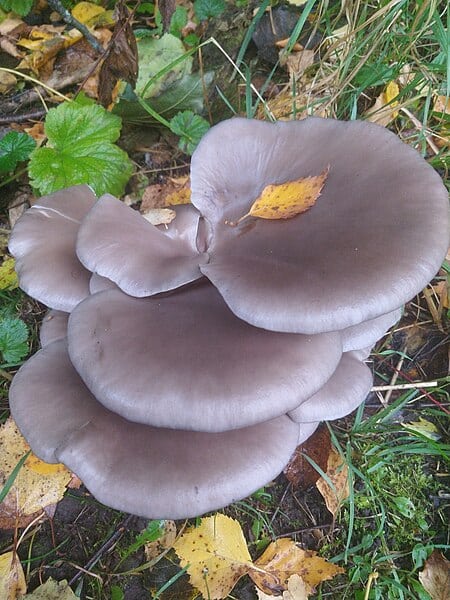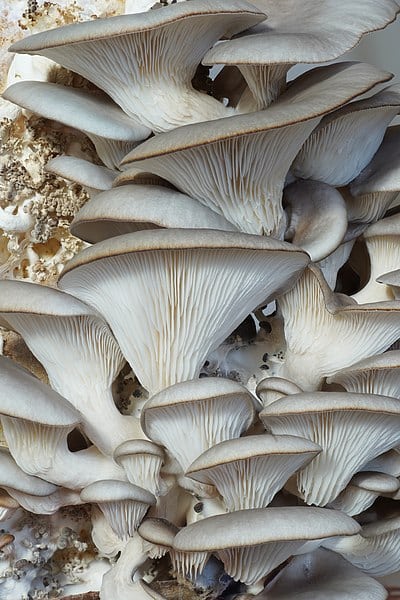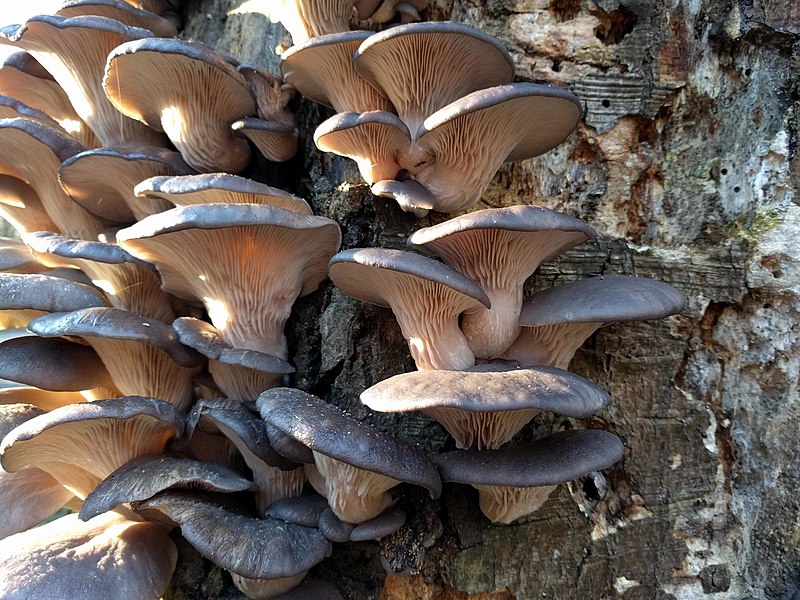Oyster Mushroom Identification – Pleurotus ostreatus
Heads up
When roaming through a forest, you might come across the oyster mushroom. Its scientific name is Pleurotus ostreatus. This mushroom is not only popular for cooking due to its delectable taste but is also sought after in the wild by many mushroom enthusiasts. Let’s explore how to identify it.
Oyster Mushroom: Key Parts in Photos




Where to find it
The oyster mushroom can be found in many forests around the world, from temperate to subtropical zones. It typically grows on deciduous trees. These are the trees that shed their leaves annually. Beech trees are especially popular hosts. This mushroom plays an essential role in the ecosystem by breaking down the wood of these trees, turning them into nutrients that can be used by other plants. This process is called saprotrophic.
How to identify Oyster Mushroom
When you think about an oyster’s shape, you probably imagine something broad and fan-like. That’s how this mushroom got its name. Its cap is shaped like an oyster or a fan. Depending on where you find it, this cap can be as small as 1 inches or as big as 12 inches across.
The color of the cap can vary. Sometimes it’s white, but it can also be gray or even dark brown. If it’s a younger mushroom, the edges of the cap will be rolled inwards. As it matures, those edges can become wavy. The flesh is white and firm. It might feel thicker in some parts because of how the stipe, is arranged.
The gills are white or cream-colored and run down the stipe if the stipe is present. The spores that fall from these gills have color ranges from white to a soft gray. This is often easier to see against a dark background.
This mushroom has a unique smell. It’s kind of like bitter almonds. That’s because of the presence of a compound called benzaldehyde.
Want to learn more?

Disclosure: This post includes affiliate links. If you make a purchase through these links, we may earn a commission at no extra cost to you. We appreciate your support, as it helps keep this website running. Alternatively, you can search for the book title on Amazon if you prefer not to use the links. Thank you for your understanding and support!
